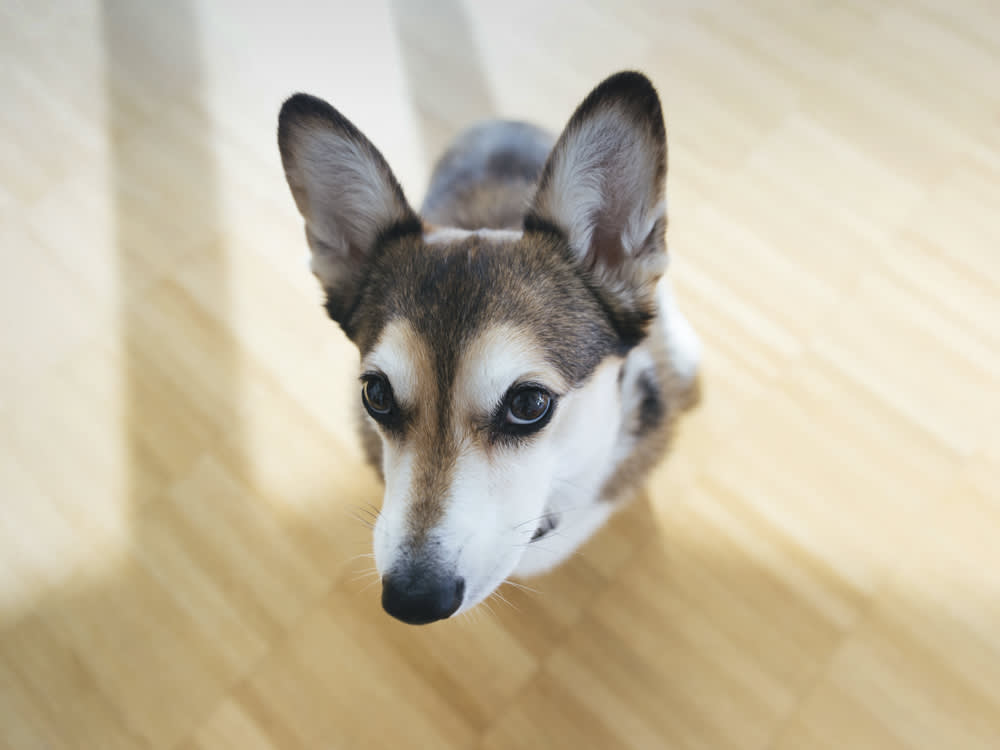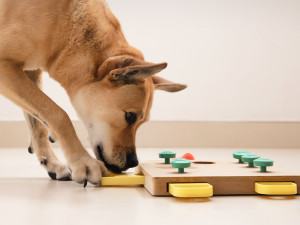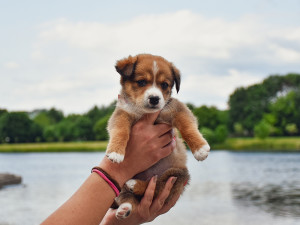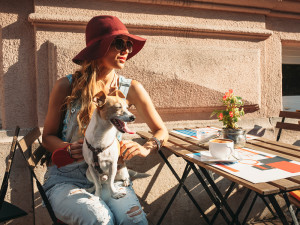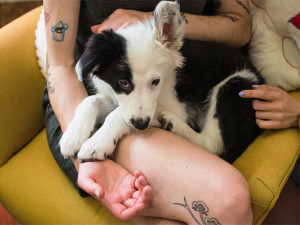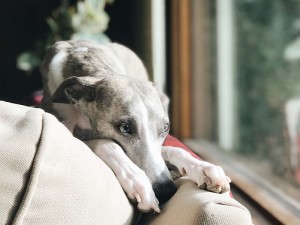How to Get Your Scared Dog to Trust You
Using these tips, your skittish dog will warm up to you.
In this Article:
Tips for Building Trust How to Help a Dog Who Was Previously Abused How to Help a Dog Who Is Scared of Specific Types of People
Building trust and a positive relationship with a scared dog is a process that involves teaching your dog they can count on you not to scare them. Not scaring a dog means protecting them from situations that frighten them and working with them gradually to overcome their fears. It means never forcing them into situations that are too much for them, and it means proceeding only at the pace they can handle, not the pace you want.
You must provide lots of positive experiences that are not scary and that the dog can handle. It’s important to be the source of what makes them happy and what they enjoy so you are the one they count on to be safe and need not ever fear. That is how to gain a dog’s trust.
Eight ways to connect with your scared dog and build trust
There are two main strategies for building trust with a skittish dog. Be the source of good (unscary) experiences that lead to positive emotions for the dog, such as providing treats, playing with toys, and being both calm and gentle.
How much do you spend on your pet per year?
Don’t be the source of bad (scary) experiences that lead to negative emotions for the dog, such as staring at them or other intimidating body language, loud chaos, or surprises. (Even if your dog is not skittish or nervous, this is how to get a dog to trust you and how to get a dog to like you.)
1. Give them awesome treats.
The purpose of the treats is to get a skittish dog to associate you with positive emotions. The better the treats are, the easier that is. Experiment with a few kinds to see which are most appealing to them. Be generous with the treats; that makes it more likely the good feelings from treats can counteract the fears.
Something you can do every day is toss treats in their direction and then walk away while they eat them. They learn that you have treats, but also that you don’t put pressure on them to come to you to get them (that can be scary for fearful dogs!) and that you give them space every time to eat the treats.
2. Encourage them to play with toys.
Some dogs really love toys, and opportunities to play with them can open pups up to joy and fun after they’ve had rough times in their lives. Other fearful dogs who have suffered are too preoccupied with the basics of food, water, and safety to act playfully. Try calmly offering a few different types of toys, and see if they’re interested.
Also, understand that while they may not be interested now, that could change as they get more comfortable and relaxed. If they don’t take to toys right away, don’t give up — try again in the future. There is arguably nothing more rewarding and heartwarming than witnessing a rescue dog’s Aha! moment when they joyfully play with a toy for the first time.
3. Keep ’em moving.
Some dogs do better with activity and motion than with the inherent tension of everyone standing still. Keep moving (try walking in big broad circles), and let them follow you and your other dogs, if you have them. Allow your dog to accompany you — or not — without paying any particular attention to them. This creates a low-pressure situation for many dogs, who will often join the movement.
4. Be calm with them.
Calmness is comforting to fearful dogs, so be calm in their presence. Speak in a soothing voice around your dog. Sit down in their presence, and avoid any sudden movements. Think about projecting calmness and steadiness as you would want anyone around you to do in a frightening situation.
Be gentle in every interaction and move slowly. Avoid wildly waving your arms around as you talk. This is the one that’s hardest for me, personally, as I am one of those people who has a hard time expressing myself without using my hands.
5. Be patient with them.
Previous experiences or their genetic makeup (or both) — factors that are beyond your control — may limit a skittish dog’s capacity to interact. Continue to accept them for who they are as an individual, respecting their limits and their timeline rather than pushing them to be like most dogs.
Be patient and gentle. Eventually, your dog’s trust in you will grow, and their fear will diminish, but trying to rush your dog will only set you back rather than build the trust faster.
6. Don’t surprise them.
Be predictable. If your dog knows what’s coming, they’ll be better able to handle it. Fearful dogs, including those who have not had a lot of interaction with people, do not like surprises.
They definitely don’t need you sneaking up on them, making sudden loud sounds, opening an umbrella near them, or doing anything else unexpected. Be predictable with your routines so, as much as possible, they know what to expect, and use cues to let your dog know what’s about to happen.
For example, if you are about to feed your dog, say so, and if you are about to stand up, say so. When your dog learns that a certain word or phrase always predicts a certain action, it helps them feel more secure, which helps them trust you more.
7. Consciously avoid being intimidating.
There are many ways that we humans can make ourselves appear less intimidating to dogs. It helps to turn a little to the side rather than face them head on and to shift our body weight back away from them. Crouching down and staying at a distance are also effective. If you must approach, do so slowly rather than in a rush.
Skip wearing a hat or backpack or carrying things, including boxes and clipboards when they’re around. This will help avoid setting nervous dogs off. Avert your eyes and don’t stare directly at them. Let them approach you rather than you going to them. If you have a beard, you could shave it off. That is a big commitment and asking a lot, but it can help you appear less intimidating to dogs.
8. Try to talk less.
So many dogs find all our talking anything but reassuring. Dogs don’t vocalize as much as people do, and many dogs who are fearful or skittish at all seem to relish the peace and quiet of silence from us. This doesn’t mean we have to be silent in our own homes or that we can’t communicate normally with the other humans in our homes. It does mean that prattling on in sweet tones or baby talk to our new friend could be counterproductive when the goal is to build trust with a scared dog.
What if my dog is scared because they were previously abused?
There is no difference between how you treat a fearful dog who was abused, compared with how you treat a fearful dog who wasn’t abused. You help them overcome their fears the same way, regardless of the cause.
Why is my dog scared of a specific type of person?
Fear in a dog is often because that type of person appears intimidating or because they have not been exposed to that type of person enough, especially as a young dog.
FAQs (People also ask):
Why is my dog so skittish?
Dogs are fearful for many reasons, including genetic tendencies, lack of adequate socialization, pain or underlying medical conditions, and past trauma such as being attacked, abused, or extremely startled.
How can I build my dog’s confidence?
Dogs become more confident if they have many positive experiences and if they have lots of training experiences where they are reinforced for their behavior.
How can you identify why your dog is so scared?
Identifying the reason your dog is so scared is not always possible, but clues can be found in their past experiences, the behavior of their genetic relatives, and the specificity of their fears.
Why is my dog so scared of everything?
When you see a dog scared of everything, it is likely because the dog’s genetics give them a tendency to be fearful or because they were not adequately socialized, or possibly a combination of the two factors.
